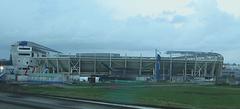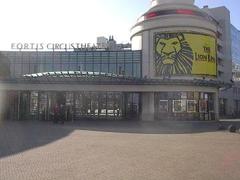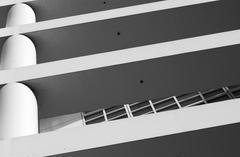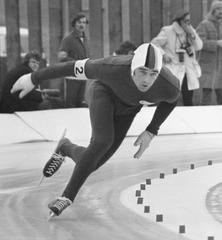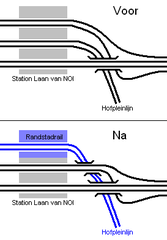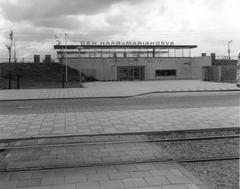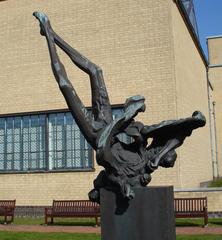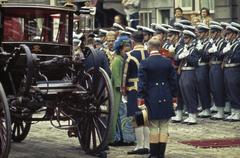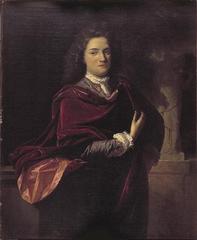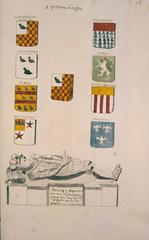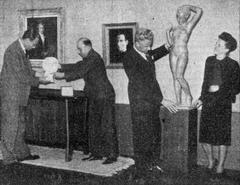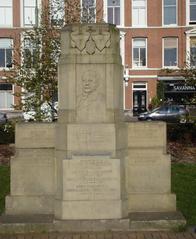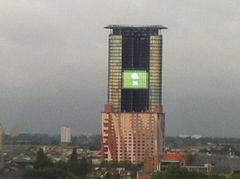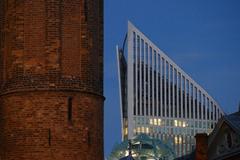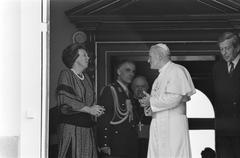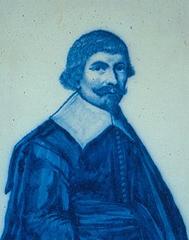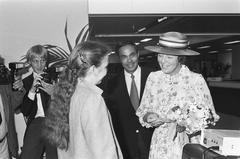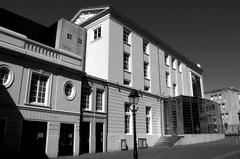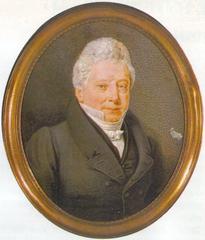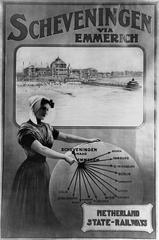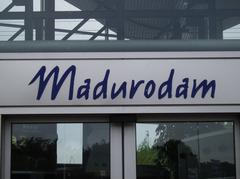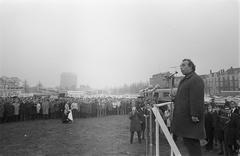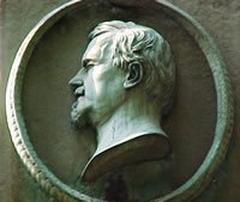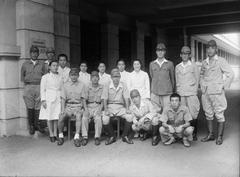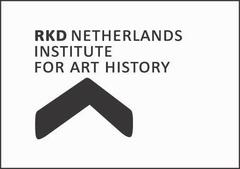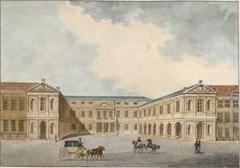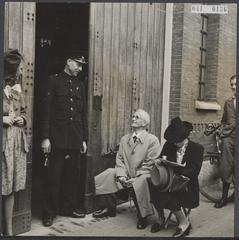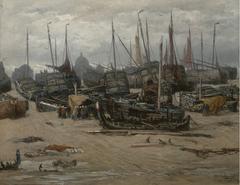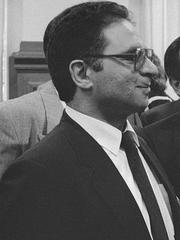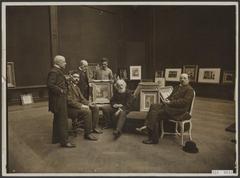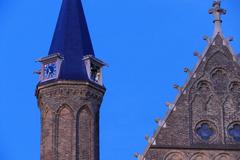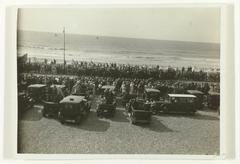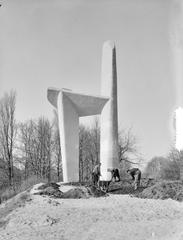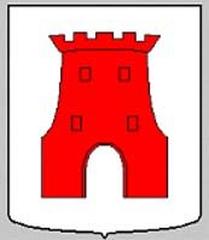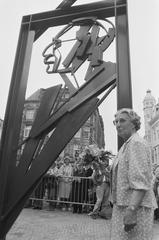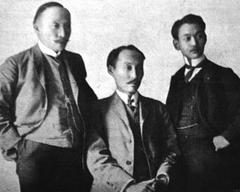
Haags Historisch Museum: Tickets, Visiting Hours, and In-Depth Guide to The Hague’s Historic Gem
Date: 04/07/2025
Introduction: The Haags Historisch Museum and Its Place in The Hague
Located at the heart of The Hague, the Haags Historisch Museum stands as a vibrant testament to the city’s centuries-old evolution. Housed in the historic St. Sebastian’s Guild Hall, this museum offers an immersive journey through The Hague’s transformation—from a modest medieval settlement by the Hofvijver pond to its current role as the seat of the Dutch government and a major international city. Its extensive collections, dynamic exhibitions, and commitment to both architectural preservation and community engagement make it a standout destination for history enthusiasts, families, and cultural explorers alike (World City Trail; Eupedia).
Although currently closed for a major renovation and expansion project set to conclude in spring 2027, the museum remains deeply involved in The Hague’s cultural life through off-site programs and exhibitions. This guide provides comprehensive information on the museum’s storied history, collections, visitor logistics, renovation plans, and the many ways you can experience The Hague’s heritage—even while the museum’s doors are temporarily closed.
Contents
- The Museum’s Origins and Historical Context
- St. Sebastian’s Guild Hall: Architectural Heritage
- Collections and Exhibition Highlights
- Visitor Information: Tickets, Opening Hours, and Accessibility
- Travel Tips and Nearby Attractions
- Museum’s Role in Heritage Preservation
- Renovation and Future Plans: Scope, Timeline, and Impact
- Practical Visitor Information Post-Renovation
- Frequently Asked Questions (FAQ)
- How to Stay Connected
The Museum’s Origins and Historical Context
The Haags Historisch Museum was founded to chronicle and interpret The Hague’s rich and multifaceted history. Its narrative spans from the earliest days as a village by the Hofvijver, through the city’s Golden Age prosperity, to its pivotal role in modern diplomacy and governance (World City Trail). The museum’s collection reflects not only key events but also the underlying social, economic, and cultural currents that shaped The Hague’s unique character (Eupedia).
St. Sebastian’s Guild Hall: Architectural Heritage
Dutch Golden Age Architecture
The museum is situated in the former St. Sebastian’s Doelen, constructed in 1636 as the guild hall of the St. Sebastian’s Guild of civic guards. This building exemplifies Dutch Golden Age architecture, with its ornate façade, gabled roofs, decorative brickwork, and high-ceilinged interiors featuring exposed wooden beams and stone floors (WhichMuseum; World City Trail). The adaptive reuse of this historic structure as a museum allows visitors to experience history in a setting that is itself an artifact.
Adaptive Reuse and Preservation
Careful restoration and maintenance have ensured the Guild Hall’s architectural integrity, safeguarding The Hague’s built heritage while providing an evocative backdrop for the museum’s exhibitions (WhichMuseum).
Collections and Exhibition Highlights
Paintings and Cityscapes
The museum’s painting collection visually chronicles The Hague’s transformation over the centuries. Cityscapes, such as Jan van Goyen’s monumental “Gezicht op Den Haag” (1651), capture historic skylines and the Hofvijver pond, while 16th–18th century portraits document the city’s evolving power structures and citizenry (stayokay.com; geschiedenisvanzuidholland.nl).
The Schutterszaal (Civic Guard Room) features group portraits of the St. Sebastian’s Guild painted by Jan van Ravesteyn and others—artworks that not only commemorate civic leaders but also illuminate the city’s early governance.
Decorative Arts and Civic Silver
The museum boasts an impressive array of schutterszilver (civic guard silver), church silver, ceremonial glassware, and intricately engraved goblets—artifacts that symbolized civic pride and the city’s communal rituals (geschiedenisvanzuidholland.nl).
Miniatures, Dollhouses, and Everyday Life
Intimate collections of portrait miniatures and dollhouses—such as those created by Lady Lita de Ranitz—offer glimpses into domestic interiors, fashions, and daily life, connecting grand historical narratives with personal stories (WhichMuseum).
Architectural Models
Striking maquettes, including the 1749 fireworks pavilion model at the Hofvijver, help visitors visualize changes in The Hague’s built environment over time (WhichMuseum).
Curiosities and Unique Relics
The museum also displays unusual artifacts, such as the preserved tongue and finger of the De Witt brothers—grim reminders of the city’s turbulent political history (stayokay.com).
Thematic and Temporary Exhibitions
Regular temporary exhibitions address themes from postwar transformation to pop culture (“Haagse Harry, dûh tètaunstelling!!”), often using interactive and multimedia elements to engage a broad audience (WhichMuseum).
The Stork: City Symbol
Throughout the museum, the stork—The Hague’s centuries-old mascot—appears in paintings, silverware, and the city’s crest, reflecting its role in local identity (stayokay.com).
Visitor Information: Tickets, Opening Hours, and Accessibility
Standard Opening Hours: Tuesday–Sunday, 11:00 AM to 5:00 PM. Closed on Mondays and public holidays.
Ticket Prices: Adult tickets typically range from €7.50–€12, with discounts for students and seniors. Children under 18 usually enter for free. Group and family rates are available (WhichMuseum).
Accessibility: The museum has made significant strides in accessibility, including ramps and elevators. However, due to the historic building, some areas may remain challenging; staff are available to assist.
Location: Korte Vijverberg 7, central The Hague—easily accessible by tram, bus, and on foot from major city sites.
Travel Tips and Nearby Attractions
Nearby Sites:
- Binnenhof: The Dutch parliament’s historic seat.
- Mauritshuis: Renowned for Dutch Golden Age masterpieces.
- Noordeinde Palace: Royal residence.
- Hofvijver Pond: Picturesque and historically significant.
Getting There: The museum is located near major public transport stops (trams 1, 9, 16). Limited parking is available; public transport or walking is recommended.
Museum’s Role in Heritage Preservation
The Haags Historisch Museum is not just a repository for artifacts—it is an active center for research, education, and community engagement. Academic collaborations, school programs, and public events encourage lifelong learning and dialogue about The Hague’s identity and history (World City Trail). The museum also participates in citywide cultural initiatives, such as scavenger hunts and walking tours, making history accessible to all.
Renovation and Future Plans: Scope, Timeline, and Impact
Why Renovate?
After decades of use, the museum’s facilities had become inadequate for its growing collections and programs. The renovation addresses space limitations, sustainability, accessibility, and modern visitor expectations (Den Haag Centraal; Zestee).
Timeline
Key Upgrades
- New Entrance and Reception: Relocated to Tournooiveld for improved access and visitor flow
- Expanded Gallery Spaces: Larger, more logical layouts, with restored panoramic views of the Hofvijver (Vrienden van Den Haag PDF)
- Sustainability: Energy label A via heat pumps, insulation, solar panels, and eliminating natural gas (Zestee)
- Climate Control: Modern systems for optimal preservation of sensitive objects (Klook)
- Accessibility: Full wheelchair access, accessible restrooms, and improved signage
- Exhibitions Renewal: Permanent and temporary displays will be completely reimagined with community input (Den Haag Centraal)
Activities During Closure
- City walks and guided tours
- Educational outreach in schools
- Community workshops
- Off-site exhibitions at partner venues (Den Haag; Zestee)
Funding and Management
The renovation is funded by the municipality of The Hague with a €17.7 million budget, with DP6 architectuurstudio leading the design (Wikipedia; Vrienden van Den Haag PDF).
Future Vision
Upon reopening, the museum will offer:
- A modern, spacious, and energy-efficient environment
- Enhanced accessibility for all
- Renewed, community-driven exhibitions
- Stronger integration with The Hague’s Museum Quarter (Zestee)
Practical Visitor Information Post-Renovation
- Expected hours: Tuesday–Sunday, 10:00 AM to 5:00 PM (to be confirmed)
- Anticipated ticket prices: Adults €12, seniors/students €8, children under 12 free; group and family tickets available
- Tickets: Online pre-booking recommended
- Accessibility: Full wheelchair access and assistance available
- Transport: Trams 1, 9, 16; parking at Haagse Toren and nearby garages
- Nearby attractions: Mauritshuis, Binnenhof, and additional museums (Klook)
Frequently Asked Questions (FAQ)
When does the museum reopen?
Planned for spring 2027 after renovations.
Can I visit during closure?
Not physically, but off-site programs, city tours, and exhibitions at partner venues continue.
How do I buy tickets post-renovation?
Online via the official website, with timed entry.
Is the museum wheelchair accessible?
Yes, the renovation ensures full accessibility.
What are the hours after reopening?
Expected to be Tuesday–Sunday, 10:00 AM–5:00 PM (confirm on the website before visiting).
Are there special reopening events?
Details will be announced closer to reopening; check the official website and social media for updates.
How to Stay Connected
- Check the official Haags Historisch Museum website for updates, event information, and digital resources.
- Visit the Den Haag tourism portal for broader travel tips.
- Download the Audiala app for audio guides and interactive maps.
- Follow the museum’s social media for real-time news, community engagement, and behind-the-scenes content.
Summary and Final Tips
The Haags Historisch Museum is a cornerstone of The Hague’s cultural life, bridging the city’s storied past with its dynamic present. Even while closed for renovation, it remains active—offering city walks, educational outreach, and off-site exhibitions. The grand reopening in spring 2027 will unveil a modernized, inclusive, and sustainable museum, fully equipped to inspire and educate new generations.
For the latest updates, ticketing details, and programming, always refer to the official resources below. In the meantime, enrich your visit to The Hague by exploring nearby historical sites or joining museum-led city walks. Use the Audiala app to deepen your engagement with the city’s history.
Sources and Further Reading
- World City Trail
- Trigger Tours
- StayOkay
- Den Haag Centraal
- Zestee
- WhichMuseum
- Eupedia
- geschiedenisvanzuidholland.nl
- Wikipedia
- Klook
- Vrienden van Den Haag PDF
- Museum.nl
- dutchculture.nl












